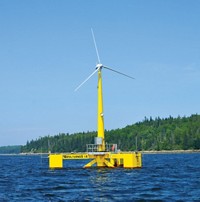Advertisement
Grab your lab coat. Let's get started
Welcome!
Welcome!
Create an account below to get 6 C&EN articles per month, receive newsletters and more - all free.
It seems this is your first time logging in online. Please enter the following information to continue.
As an ACS member you automatically get access to this site. All we need is few more details to create your reading experience.
Not you? Sign in with a different account.
Not you? Sign in with a different account.
ERROR 1
ERROR 1
ERROR 2
ERROR 2
ERROR 2
ERROR 2
ERROR 2
Password and Confirm password must match.
If you have an ACS member number, please enter it here so we can link this account to your membership. (optional)
ERROR 2
ACS values your privacy. By submitting your information, you are gaining access to C&EN and subscribing to our weekly newsletter. We use the information you provide to make your reading experience better, and we will never sell your data to third party members.
Environment
Renewable Electricity Expansion
National Research Council study predicts wind, solar growth in near term
by Jeffrey W. Johnson
June 29, 2009
| A version of this story appeared in
Volume 87, Issue 26
At current growth rates and using technologies available today, renewable energy sources—solar, wind, geothermal, and biomass—could provide 10% of U.S. electricity by 2020, according to a June 15 National Research Council report.
The report, "Electricity from Renewable Resources," is part of a series of energy studies by NRC, says Lawrence T. Papay, who chaired the panel and is chief executive officer of PQR, a California energy consulting firm. A final report is expected in mid-July and is intended to serve as an energy-issues guide for Congress and the Administration.
The renewable energy report notes that the four sources analyzed in the study generate less than 2.5% of U.S. electricity today, and had been expected under a business-as-usual scenario to supply only 8% of U.S. needs by 2030. However, considering only wind energy, the report notes that policies that recently have been applied to encourage wind's development have put this source alone on a path to produce 8% of the nation's electricity by 2020.
"The committee assumed an aggressive but achievable scenario," says K. John Holmes, NRC staff director for the study. "That means that a 10% share by 2020 for nonhydroelectric renewable energy sources and 20% by 2035 seems within the nation's reach." Hydroelectric power generation is unlikely to grow in the foreseeable future, and so it is not a major consideration in the report.
But to achieve these rates, the report says, policies must be in place to encourage the development of advanced technologies, more financial investments, and greater deployment of renewable sources of electricity.
The report primarily concentrates on wind and solar. These two sources of renewable energy offer greater electricity potential in the near term than do geothermal or biomass, notes Papay, who adds that the panel felt biomass is more likely to be a feedstock for biofuels than a source of electricity. Solar power has the potential to provide thousands of times as much electricity as the nation currently needs, and land-based wind turbine installations could provide 10 to 20% of U.S. electricity demand, according to the report.
However, to reach the 20% level, wind power would require a $100 billion investment for 100,000 wind turbines, the report points out, relying on Department of Energy data. In return for this investment, some 140,000 new jobs would be created and 20% of carbon dioxide emissions that are currently generated by the electricity sector would be eliminated, the report says.
According to the NRC panel members, to get beyond 20% of U.S. energy needs from renewable energy sources will require major scientific advances and significant changes in the way the U.S. generates, transmits, and uses electricity.
Holmes stresses that a "fundamentally different electricity system" will be needed. Among the advances that would be necessary are a much improved long-distance electricity transmission system to move electricity around the nation and an intelligent electric grid.
The report singles out solutions such as locating wind and natural gas facilities or wind and solar generating facilities together to complement each other and as a hedge on the inherent variability of power generation from renewable energy sources such as sunshine and wind.
Expansion of renewables will also have many environmental and local impacts, both positive and negative, the report notes. For instance, while wind and solar energy emit less mercury, sulfur dioxide, CO2, and other pollutants, both would require large amounts of land for installations.
Going Green
- To read more about other sustainable technologies, go to www.cen-online.org/sustainability/sustainability.html.



Join the conversation
Contact the reporter
Submit a Letter to the Editor for publication
Engage with us on Twitter